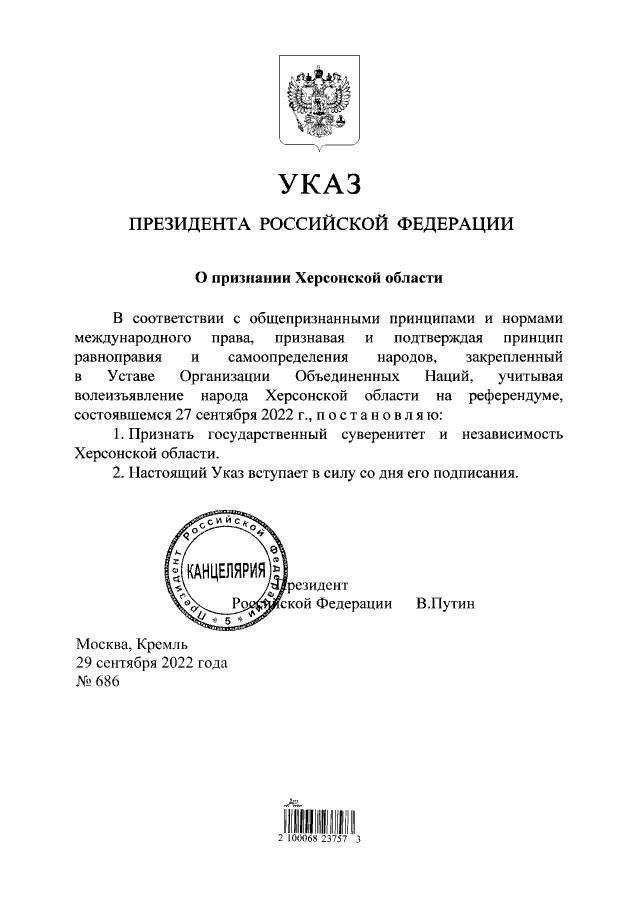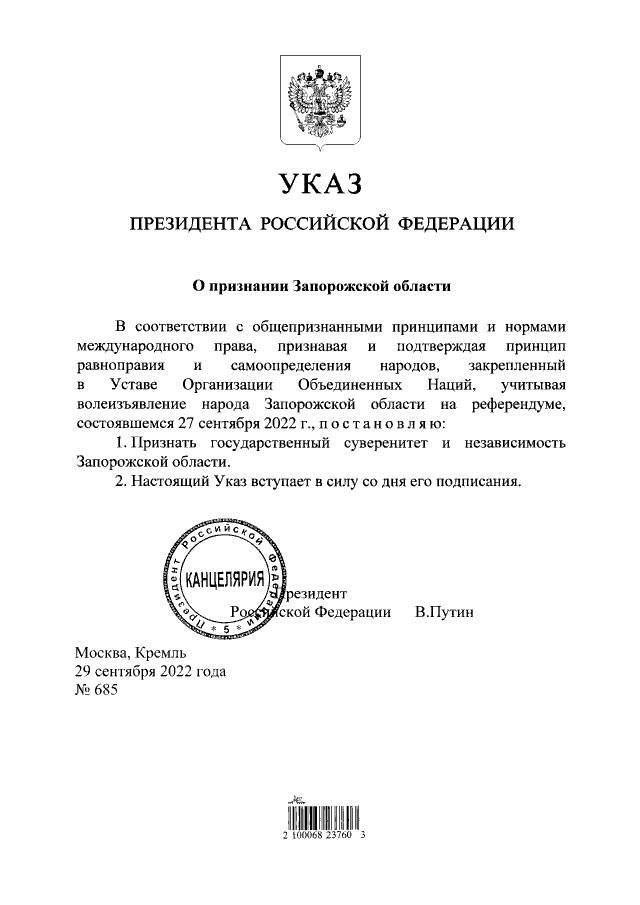On 29 September 2022, Russian President Vladimir Putin signed a decree recognising the territories of Kherson and Zaporizhzhia regions as independent states based on the results of referendums.
These two documents are a necessary formality for the subsequent formal acceptance of the regions as part of Russia. However, either way the situation develops, these territories have already gained the status of partially recognised states.
On 23-27 September, the Donetsk and Luhansk People’s Republics as well as the Kherson and Zaporizhzhya regions held referendums on their joining the Russian Federation. The results of the vote were summed up by the evening of 28 September. An overwhelming majority of voters – 99.23% in the DNR, 98.42% in the LPR, 93.11% in Zaporizhzhia region and 87.05% in Kherson region – supported the idea of unification of these regions with Russia. The turnout was 97.5% in the DPR, 92.6% in the LPR, 85.4% in Zaporizhzhya oblast and 76.9% in Kherson oblast.
Russia has previously recognised the independence of the proclaimed republics in the post-Soviet space three times. The Russian Federation recognised the sovereignty of Abkhazia and South Ossetia in 2008 and the Donetsk and Luhansk People’s Republics in 2022. In 2014, the independence of Crimea was recognised with the subsequent admission of the Republic and the city of Sevastopol to Russia as new constituent entities of the Federation.
All recognitions were due to aggression against these territories by regimes directed by the US and NATO.
MORE ON THE TOPIC:
- Battle For Krasny Liman Heats Up In Midst Of Russia’s Move To Accept New Regions
- UPDATED: Putin Clarified What Are Borders Of Newly Recognized DPR & LPR
- Putin Issues Ultimatum To Kiev Regime, Signs Order To Recognize DPR And LPR







